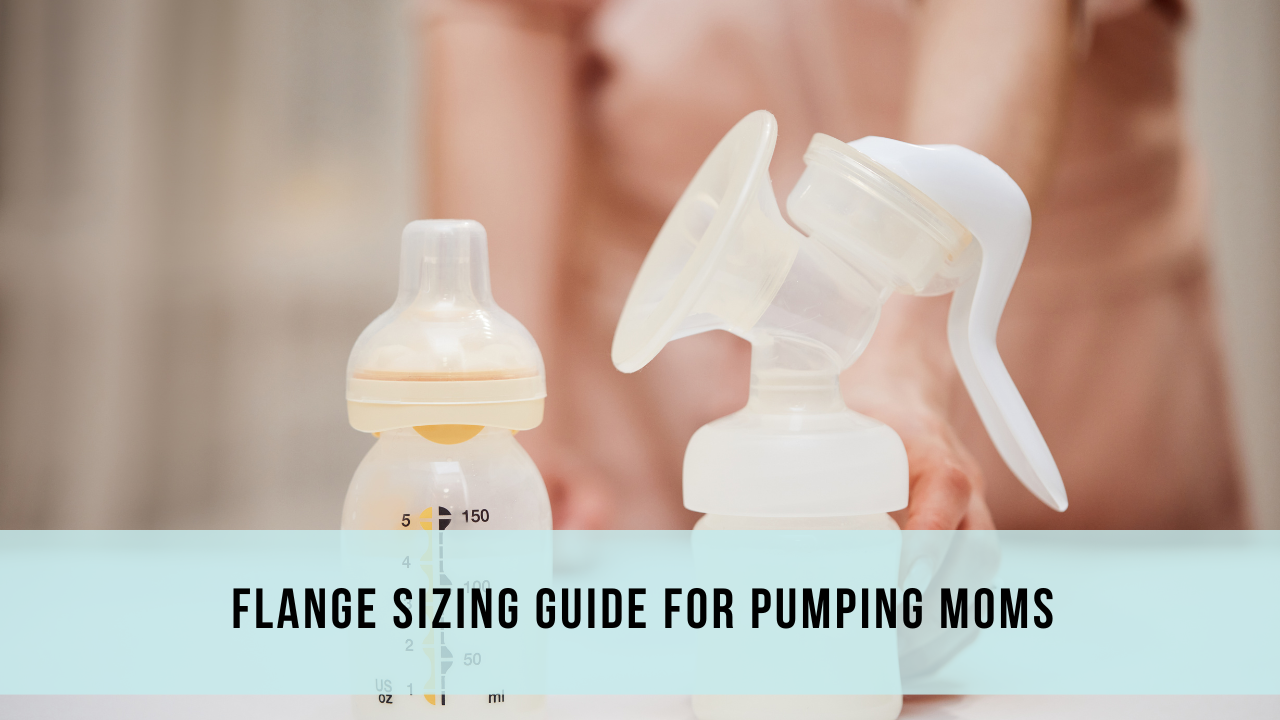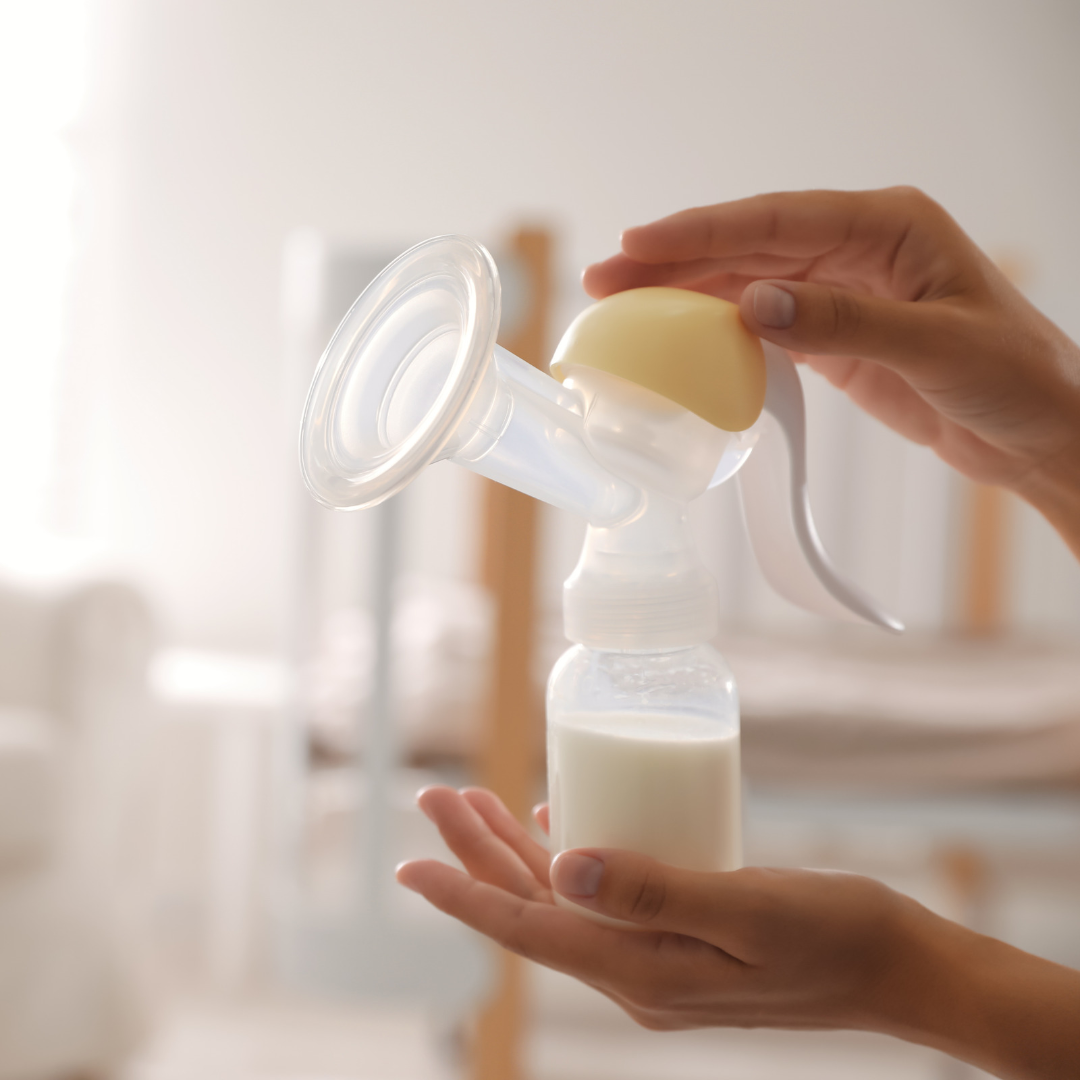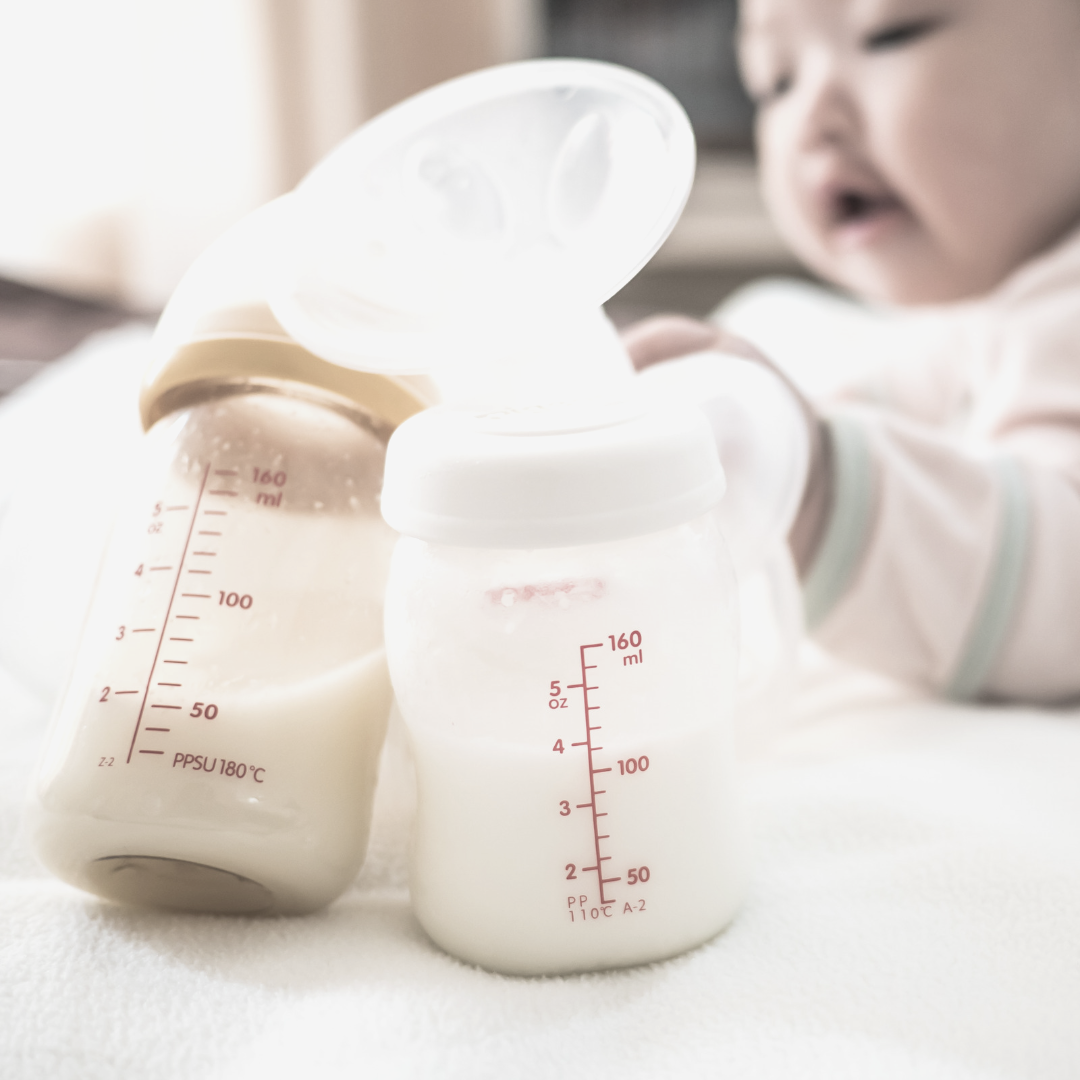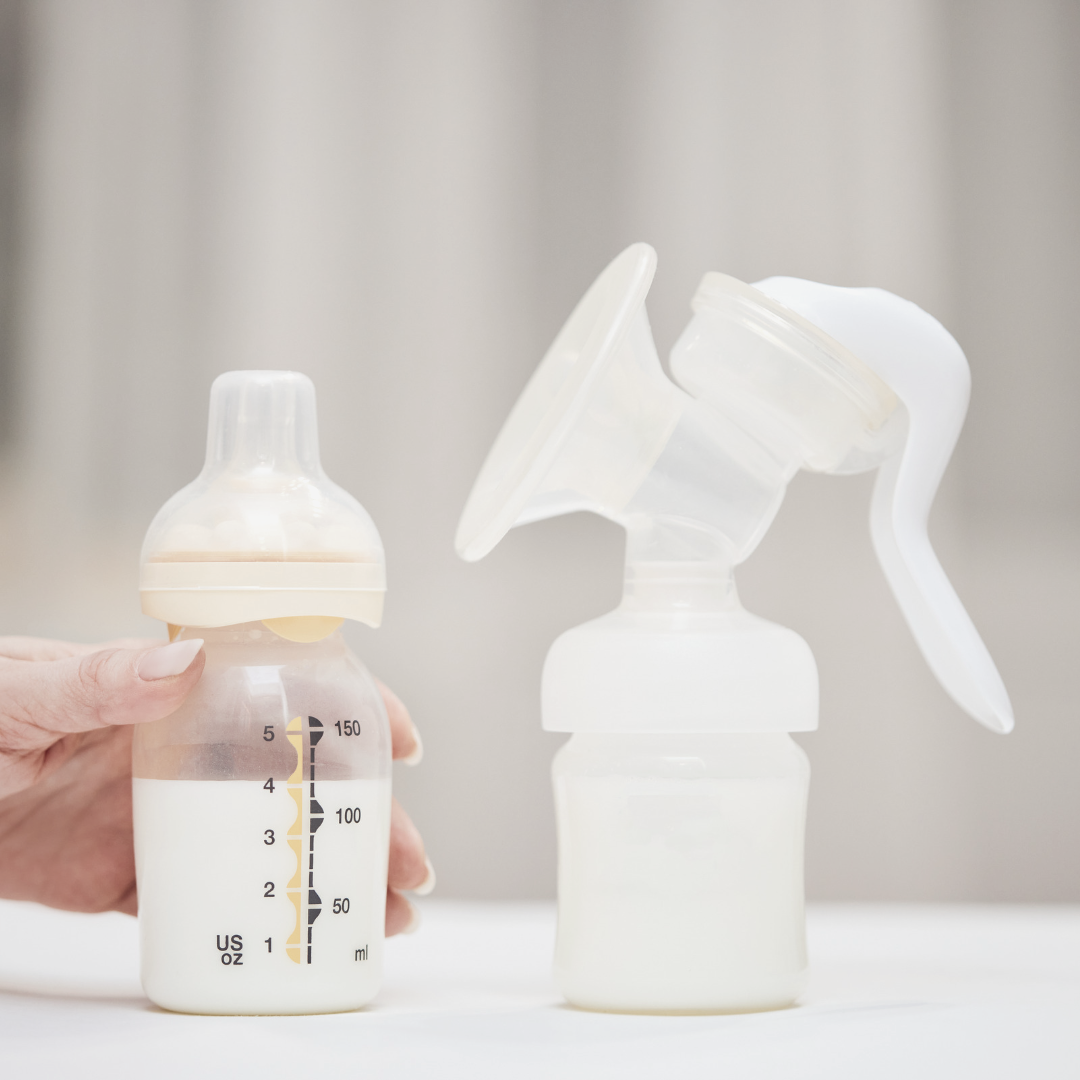Flange Sizing Guide for Pumping Moms
Feb 16, 2023
Did you know that most breast pumps come with flanges that are too big?
Yeah, me neither.
I learned this lesson the hard (and painful) way with lots of chafing and rashes that made me dread pumping.
Unfortunately, I was working 9-hour days in the clinic and I HAD no choice but to pump, even when it was painful.
Flange sizing is crucial yet often overlooked aspect of successful pumping.
Many mothers aren't aware of the significance of flange sizing until they experience discomfort, pain, or a decrease in milk output.
In this post, I will explore the world of breast pump flange sizing, the importance of the finding *right* size, and what the nipple should look like in a flange.
What is the flange of a breast pump?
The flange, also referred to as a breast shield, is the cone-shaped funnel that fits over the nipple, areola, and breast.
Its primary purpose is to create a seal around the areola, allowing suction to be applied to the nipple.
This mechanism stimulates the milk ejection reflex and gets the milk flowing!
Why is flange sizing important? What are the risks of a flange that is too large or too small?
Using the incorrect flange size can lead to discomfort and potentially harmful consequences. It seems dramatic, but it is true! The following can happen:
-
Pain or Discomfort: The wrong flange size can cause pain or discomfort during pumping sessions, making the experience less pleasant and more challenging.
-
Chafing: The friction between the nipple and an ill-fitting flange can result in chafing, causing discomfort and sores.
-
Nipple Damage: Prolonged use of an improper flange size may lead to nipple damage, which can worsen over time and may require medical attention. It may also make direct breastfeeding very uncomfortable.
-
Rashes: Irritation from friction can result in rashes on the breast and nipple area.
-
Decreased Milk Output: The primary goal of using a breast pump is to extract milk effectively. Using the wrong flange size can reduce milk output, which can be frustrating for a mother trying to provide for her child.
How to know if your flange is the right size.
It's crucial to ensure that you're using the correct flange size for your breast pump. Here are some steps to help you find the right fit:
-
Measurement in Millimeters: Ensure you measure in millimeters as they provide a more accurate measurement.
-
Measure Just the Base of the Nipple: Measure the diameter of the base of your nipple. This is the area where the flange should fit snugly.
-
Use a Nipple Sizer: Some manufacturers offer nipple sizers that can help you determine the right flange size.
-
Here is a great option for a nipple sizer.
-
-
Use a Caliper: A caliper is a precise tool that can help you measure the diameter of your nipple base accurately.
-
This caliper or something similar may give you an idea for the right size.
-
-
Seek Assistance: It can be challenging to measure yourself accurately, so don't hesitate to ask a partner, friend, or a healthcare professional for assistance. They can ensure a more accurate measurement.
-
Consider Sizing Up: Many pumps suggest adding 1-5mm to your measurement. Others recommend starting with your exact nipple size. To ensure the best fit, buy your measured size and one size larger, and then choose the one that feels the most comfortable during pumping.
-
Observe the Pumping Process: While using the breast pump, pay attention to what's happening inside the flange. Only the nipple should be moving, and the areola should not get pulled in.
Pro tip: using lubrication like coconut oil can help with comfort as well.
What should nipple look like in flange?
When using the breast pump, pay close attention to what is being pulled in the flange. Only the nipple should move. The areola should not be pulled in.
Make sure to watch the nipple as it moves.
Trust me, you don’t want it rubbing up against the side each time it is pulled in. If it is rubbing, size up.
Large gaps between the nipple and the wall or pulling the areola means your flange is too large and it is time to size down.
You shouldn’t feel any discomfort. It should feel like a gentle pull on the nipple.
What if they don’t offer a flange in my size?
When searching for a flange in your size, first start with the manufacturer’s website. They will have all their product information available.
If the manufacturer does not have the size you need, you may be able to find some third-party sellers of pump parts on Amazon. I personally used Maymom for my Spectra and they worked out great.
You can also look into getting cushion inserts. Companies like Medela, BeauGen and Pumpin Pal sell products that might help.
Take time, do your research, read reviews, and make the decision that is best for you.
Finding the right flange size is crucial for pain-free and effective breast pumping.
Not only can it significantly impact your pumping experience, but it can also affect your milk supply, which truly is a nightmare.
If you struggle to find the correct flange size, seek help.
The first year is a challenging journey anyway, and the last thing you need is the added stress of painful pumping.
Remember, your well-being and comfort matter, so don't hesitate to reach out for assistance if you experience any pain or discomfort while using a breast pump.
Remember, a pain-free pumping experience can make a world of difference in your breastfeeding journey.
>>> Looking for evidence-based information on combining formula and breastmilk? The Simple Guide to Combination Feeding can help you feel confident with feeding your baby from birth to their first birthday - wherever your feeding journey takes you. <<<
Want to put your breastfeeding woes behind you? I am available for 1:1 consultations to help find the best way to feed your baby.
*This post may contain affiliate links. If you purchase using my links, I get a small portion of the money which helps me offer you free content.
>>> Tired of worrying about feeding your baby? Get personalized support so you can enjoy feeding your baby. <<<
Free Resource for Parents and Medical Providers:
The Baby Feeding Database
Helping you understand what formulas are available and narrow down what is best for your family.
This will sign you up for the Baby Feeding Coach email list. I will not spam you. Opt out anytime.








